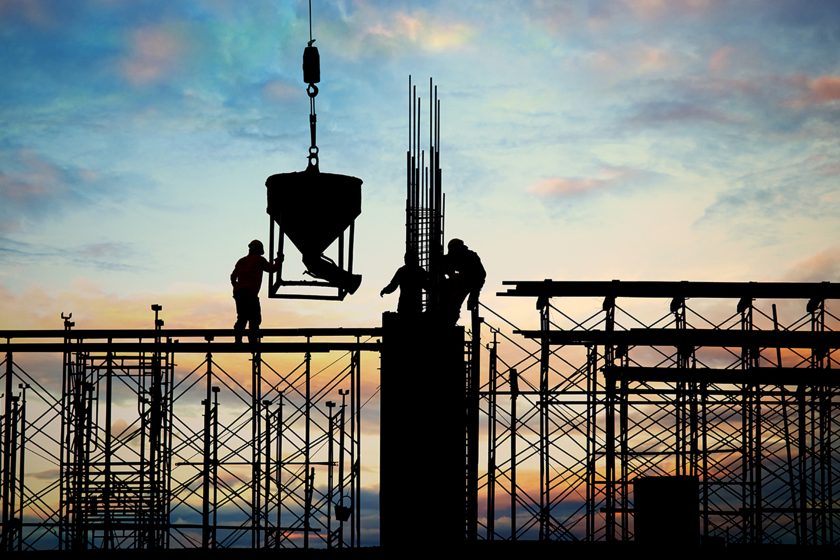Covid-19 has significantly redefined how we lead our lives and has brought a paradigm shift in the way businesses operate. The lockdown has severely impacted many sectors, especially the real estate industry. During the initial phase of the lockdown, the reverse migration of workers affected the progress of construction and bought a momentary pause to the on-ground activities.
Besides, the numerous ancillary industries that are closely connected to the real estate segment also witnessed a slowdown of events. Furthermore, owing to the economic uncertainties that transpired, the consumer sentiment also saw a considerable drop, adversely impacting the growth of the sector.
Now with the lockdown being eased out in phases, the need of the hour is to “re-look – re-evaluate– revamp” and adopt strategic measures that will revive the sector and the economy at large.
A faster revitalisation is most crucial for the real estate industry, which is one of the largest contributors to India’s GDP and employs about 70 Lakh people across formal and informal employment. But unlike any previous crisis or slowdown, to overcome the effect of this pandemic, special integrated efforts are required by all stakeholders to ensure a complete and holistic revival.
Let’s deep dive into the different aspects that require urgent attention.
What should developers do?
Real estate industry has always followed a traditional approach towards most of the aspects. However, it has become imperative for the industry to transform, improvise and move ahead with time. Developers must take a close look at their businesses and address their shortcomings.
- Digitise or go extinct: One thing this pandemic has taught us is to be technologically abreast. Technology should be at the heart of the operation. Be it the front end or back end operations; developers should align their synergies and adopt the technology. AI, machine learning and data analytics etc. should be deployed smartly to all fixtures like ERP, project management, customer engagement, and improve our efficacies.
- Embrace employees first approach: The nuances of Covid-19 have made safety and wellbeing a top priority for businesses in any industry. Real estate industry has a significant percentage of migrant workforce working in it, and hence it is crucial to revisit the standard operating procedures. Customising and adopting policies that are aligned with today’s situation is the need of the hour. There should also be a pandemic contingency plan to mitigate any on-ground crisis that may happen.
One of the significant aspects that have come to light now is the fact that the real estate industry is not a sector which was traditionally favourable towards remote working. This has been primarily due to the nature of work in this sector. It is time to approach and implement workplace policies keeping in mind the future.
What can the government do?
The walk to recovery will be a half-hearted one if the efforts taken by the industry are not supported with the required impetus from the other stakeholders as well. The government must lay the groundwork to provide a strong foundation for growth.
- Implement announced reforms on priority: Finance Minister Nirmala Sitharaman, as well as Reserve Bank of India, had announced multiple reforms during the lockdown and in the unlock 1.0. But just announcing is not enough. Of the announcements, the repo rate cut is a promising initiative, which will also boost consumer confidence in the industry. These announcements should be transmitted with immediate effect for the sector to fast-forward its recovery.
- Granting infrastructure status: The industry has been hopeful of this aspect for quite some time. This is an ideal situation to grant infrastructure status to the entire real estate sector. This will create more financing options at lower interest rates, thus giving a massive boost to the developers.
- Single-window clearance: Needless to say, that the pandemic has slowed down projects. Therefore, to bring more transparency and quicker conversions – a single-window clearance will be a welcome move. Apart from cutting delivery time short, it will also reduce operational costs, thus reducing property costs for consumers.
- Bring more reforms: Some of the other aspects that the government can look at are relaxing delivery timelines( which has already been done), standardise raw material pricing, re-look at input tax credits and GST rates, and address liquidity shortage.
The need of the hour
While the above aspects are pivotal, we must not forget that the end consumer is the most important stakeholder in the real estate business. For reinvigorating positive consumer sentiment, we have to address their concerns and make purchasing a home a viable option during this time.
- Ensure they don’t miss their one-on-one connect: The impact of the virus is not yet over. Social distancing will be normal for a while. Real estate consumers have always been heavily dependent on one-on-one interaction for final purchasing decisions. This needs to change, and we have to make the process seamless for the consumers. Real estate players should have a robust technology interface which will allow them to personalise their communication and outreach to the consumers. A lot of digital tools like AI, VR, AR, 3D imaging etc. can be utilised to improve consumer interactions.
- Better interest rates from financial institutions: Lower interest rates on home loans can incentivise new buyers and increase the pool of potential homebuyers. The Reserve Bank of India’s decision to link loan rates with the repo rate would make home loans cheaper. The current interest rates are at a historical low. This will lower EMIs on home loans. It presents a great opportunity for the sector as the ease of financing should translate into increased sales, new project launches and a rejuvenated economy.
- Introduce flexible payment options: Real estate players can also look at introducing more consumer-friendly payment/buying methods. This is a good time for homebuyers to but their dream home with the interest rates being at a historical low. In fact, with the interest rates being just 200 basis points above the FD rates, this is the best time to lock them in. Developers should make the best of the renewed enthusiasm and offer flexibility to buyers to encourage the purchase of their ready to move in projects.
- Consumers should not feel scared to invest in properties: Real estate is a safe and secure long-term investment. The current slowdown is a great opportunity to buy a home as the market is expected to regain its previous momentum. Although there will be a temporary slowdown, it is unlikely to affect the increasing real estate price trajectory. Homebuyers should favour risk-free property investments during this time. There will be high demand for reputed developers with minimal execution risk.
All of these concerted efforts will enable the industry to reinstate its growth trajectory and continue the momentum to become the projected USD 180 billion industry in the next few years despite the slowdown.
This article is contributed by Rakesh Reddy, Director, Aparna Constructions & Estates.
(The views expressed here are solely those of the author and do not necessarily represent or reflect the views of RoofandFloor)





